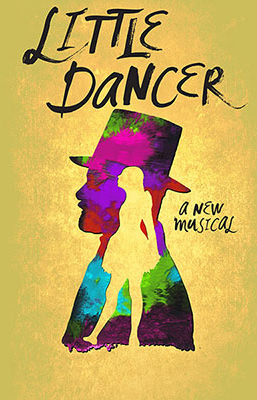 Edward Degas’ sculpture ‘The Little Dancer’ is one which every dancer is familiar with. Created in 1881, the model was a 14 year old student at the Paris Opera Ballet School named Marie van Goethem. The figure of the girl, standing in a casual fourth position, arms clasped behind her, has appealed to people – not just dancers – everywhere. It is also largely admired by dancers for its correct depiction of turned out limbs.
Edward Degas’ sculpture ‘The Little Dancer’ is one which every dancer is familiar with. Created in 1881, the model was a 14 year old student at the Paris Opera Ballet School named Marie van Goethem. The figure of the girl, standing in a casual fourth position, arms clasped behind her, has appealed to people – not just dancers – everywhere. It is also largely admired by dancers for its correct depiction of turned out limbs.
Now the story of the model and the artist has been brought to the stage in a new musical, directed and choreographed by the legendary Broadway choreographer Susan Stroman. It is now running at the Kennedy Centre in Washington DC until the end of November, with the expectation that the new musical will transfer to New York in the near future. The lead role of the young Marie has been created for Tiler Peck, a principal dancer of New York City Ballet who has recently been trying her hand at musical theatre. It has been maintained that this will be one of the rare Broadway musicals not based on a film.
In more news for NYCB, Christopher Wheeldon will be directing and choreographing a stage version of one of the most iconic musical films of all time: An American in Paris. NYCB principal Robert Fairchild, an exceptionally versatile performer, will take on the Gene Kelly role as the leading man.
The much-loved Gershwin songs guarantee a first-rate score, and it will be exciting to see how Wheeldon handles the pressure of a big Broadway musical, bringing the film’s characters to life in the 21st century, despite being much better known as a classical ballet choreographer. An American in Paris opens in Paris at the Théatre du Chatelet in December and arrives on Broadway in April next year.

 Can you imagine a life in which you did not dance? This might be incomprehensible to some dancers, but for many, a break from the passion is exactly what they need.
Can you imagine a life in which you did not dance? This might be incomprehensible to some dancers, but for many, a break from the passion is exactly what they need. Scottish youth arts have benefitted from £1 million from the Scottish government. The Scottish Government has helped secure the future of Scottish Youth Theatre with the announcement of the money, to be used over three years for the youth arts in Scotland. Following so many funding blows for the arts in recent years, the announcement that the Scottish government is to give such a substantial sum is extremely good news.
Scottish youth arts have benefitted from £1 million from the Scottish government. The Scottish Government has helped secure the future of Scottish Youth Theatre with the announcement of the money, to be used over three years for the youth arts in Scotland. Following so many funding blows for the arts in recent years, the announcement that the Scottish government is to give such a substantial sum is extremely good news. A new research project that aims to analyse the mental processes used by dancers while they are performing has been launched in order to develop a better understanding of creative techniques. The three-year project, funded by the Leverhulme Trust, is being led by Plymouth University and will work in collaboration with Trinity Laban Conservatoire of Music and Dance in London and Coventry University.
A new research project that aims to analyse the mental processes used by dancers while they are performing has been launched in order to develop a better understanding of creative techniques. The three-year project, funded by the Leverhulme Trust, is being led by Plymouth University and will work in collaboration with Trinity Laban Conservatoire of Music and Dance in London and Coventry University. Washington Ballet is set to make a historic debut when it presents iconic ballerina Misty Copeland at the helm of its production. In April 2015, many firsts will be seen for the 70 year old company, none more prominent than the premiere of star ballerina Misty Copeland in the leading roles of Odette/Odile. The production will also launch performances by musical artists of S&R Foundation’s Evermay Chamber Orchestra in Washington Ballet’s first-ever full length production of this quintessential ballet.
Washington Ballet is set to make a historic debut when it presents iconic ballerina Misty Copeland at the helm of its production. In April 2015, many firsts will be seen for the 70 year old company, none more prominent than the premiere of star ballerina Misty Copeland in the leading roles of Odette/Odile. The production will also launch performances by musical artists of S&R Foundation’s Evermay Chamber Orchestra in Washington Ballet’s first-ever full length production of this quintessential ballet.